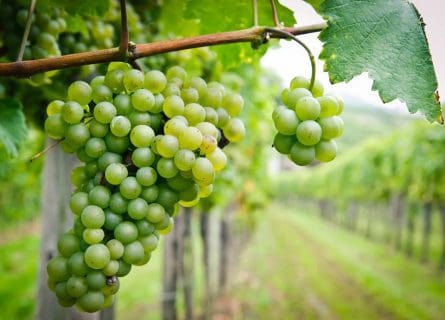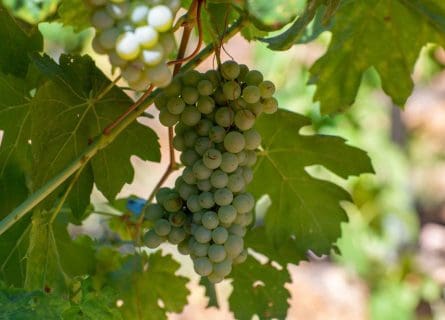
Arcachon Travel Guide
Savor the Beauty of Arcachon: Where Coastal Charm Meets Natural Splendor, and Oysters are a Delight!
A long-time oyster-harvesting area on the southern side of the picturesque Arcachon Bay in Aquitaine, this gorgeous seaside town is understandably full of sun-seekers in the summer. Yet step away from the admittedly delightful seafront, and you’ll discover another world – chic boutiques, excellent restaurants, and charming cafes are a million miles away from the maddening beach crowds. Its four little quarters are romantically named for each season, with villas that evoke the town’s golden past amid a scattering of 1950s architecture.
Arcachon forms part of the expansive Aquitaine region, an area that boasts one of the most dramatic and colorful legacies in all of France. Rome colonized the Aquitaine region in 56 BC; the area 100km east of the Atlantic at the lowest bridging point on the River Garonne was named Burdigala. Then, in 55 BC, Julius Caesar invaded Britain from the commune of Wissant. Roman rule in Gaul (France) reigned supreme during this era and several centuries after. Their legacy included magnificent aqueducts and amphitheaters, the remains of which survive across France today.
After the Western Roman Empire collapsed in 476, France was ruled by the Frankish Merovingian and Carolingian dynasties for over four centuries. Post-Romans adopted important aspects of Gallo-Roman culture, including the Christian religion. Yet a distinct and proud Gallo culture developed during this time – historians presume that Arcachon was a tiny fishing village at this point in history, with perhaps less than 100 inhabitants.
The region’s landmark moment occurred in 1152, when Eleanor of Aquitaine married Henry of Anjou, bringing a further third of France under the control of the English crown. French politics would be defined by the subsequent rivalry between France and England for control of Aquitaine and the vast English territories in France for three centuries. However, Bordeaux and the wider region prospered under the English. Their fondness for the signature wine style of the area (known across the Channel as claret) provided the impetus for Bordeaux’s enduring international reputation for fine wine.
Meanwhile, battles raged across France during the Hundred Years War (1337-1453). Its most renowned heroine is Joan of Arc, who persuaded the French King Charles VII that she had a divine mission from God to expel the English from France. Tragically, she was convicted of witchcraft and heresy – Joan was burned at the stake in 1430. However, Charles VII marched triumphantly into Paris in 1437, although it wasn’t until 1453 that the English were driven from French territory (except for Calais).
The 16th and 17th centuries were a very turbulent time for the inhabitants of Aquitaine. The Reformation and the rise of Protestantism caused many conflicts between Catholics and Huguenots (French Protestants who received help from the English). Then, at the tender age of five, the Roi Soleil (Sun King) ascended the throne as Louis XIV. Unfortunately, his reign was a disaster for France – he involved the nation in a rash of wars that nearly bankrupted the Treasury. He also revoked the Edict of Nantes in 1685, which guaranteed the Huguenots many civil and political rights, notably freedom of conscience.
In the 18th century, revolutionary sentiment in France reached a fever pitch, culminating in the outbreak of the reign of terroir and the establishment of the First Republic in 1792. This was terrible news for the nation’s monarchy – Louis XVI was publicly executed in 1783, and his wife, the much-vilified Marie-Antoinette, was also guillotined that same year.
During the 19th century, Arcachon’s reputation as a leading wellness resort became established across France. It had existed until this point as a small, unremarkable fishing village with a mere few hundred inhabitants; however, Emperor Napoleon III of the Second Empire signed a decree in 1857, awarding Arcachon the status of an independent municipality. The railway line between Bordeaux and the village was completed that same year. Slowly attracting the great and the good from Bordeaux, the ‘Ville d’été’ began to expand as more and more people heard of Arcachon’s miraculous healing powers, a place where sick people could take the sea air and recover. An enterprising group of businessmen, the Pereire brothers, continued to develop the summer tourism angle, promoting the Abatilles thermal spring. Before too long, wealthy merchants from Bordeaux and the rest of France were clambering over themselves to secure accommodation in Arcachon.
Sadly, the 20th century saw much political upheaval and bloodshed across France. The outbreak of WWI caused untold misery, although much of the war took place in northeastern France, with trench warfare using thousands of soldiers as cannon fodder to gain a few yards of territory. In the war’s latter stages, the United States Navy established a naval air station to operate seaplanes. WWII ended with France’s surrender and Arcachon forming part of the Vichy Republic – a puppet state subservient to Nazi Germany.
Yet Arcachon has overcome the trials of the 20th century, reinventing itself as a modern, sophisticated, and tranquil resort for discerning travelers who eschew noise and excitement. What lured in 19th-century bourgeois Bordelaise remains the same – spectacular scenery, excellent gastronomy, and an inviting, relaxed pace of life. We can imagine no finer place for wine lovers searching for the ultimate “get away from it all” destination!
-

Osyter restaurant on the beach Wine & Gastronomy
For many gastronomes in Bordeaux, and indeed France, Arcachon means one thing – shellfish. It is widely agreed that some of the finest oysters in the world emanate from this part of France; the bay’s oysters (served raw and accompanied by the local small, flat sausages and Crépinettes ) appear on menus everywhere. However, leading restaurants might serve these venerable oysters from each of the four breeding zones across the Bassin d’Arcachon – Banc d’Arguin, Ile aux Oiseaux, Cap Ferret, and Grand Banc. Each zone is said to imbue the oysters with a distinct flavor; tasters often describe Cap Ferret oysters as having citrus notes, while Grand Banc oysters are renowned for their taste of roasted hazelnuts.
Of course, shellfish is just the beginning of Aquitaine’s varied and sophisticated gastronomy. This part of southwest France is famous for its truffles and poultry, especially the ducks and geese whose fattened livers are turned into pate de foie gras (duck or goose-liver pate), which is sometimes flavored with cognac or truffles for that extra special decadent touch. Confit de canard and confit d’oie are duck or goose legs simmered in their fat. The preserved fowl is then left to stand for some months before being eaten. However, the Perigord truffle or “black diamond of Perigord” is perhaps Aquitaine’s most significant contribution to the culinary world. Served sliced on foie gras with a glass of Sauternes, there are few gastronomic indulgences like it. Famous regional cheeses include Brebiou, Cabecou, Etorki, Ossau-Iraty, Rocamadour, and Bleu des Basques.
Sauternes, of course, is just one of the fabulous wine styles available in the wider Bordeaux region. There is hardly sufficient space here to do the region justice, but Bordeaux is a veritable mecca for fine wine aficionados. Over 1000-sq-kilometers of vineyards await, including the mighty chateaux of Pauillac, such as Lafite and Latour, or the velvety, sumptuous reds of St-Emilion and Pomerol on the Right Bank of the Dordogne river. What is less commonly known is that Bordeaux produces some excellent sparkling wines as well – Cremant de Bordeaux is often delicious and very well-balanced—the perfect aperitif. Your hosts in Arcachon will always have a selection of these vast and diverse wine styles to try – the best restaurant wine lists are tomes dedicated to hedonism.
A Guide to the Gastronomy and Cuisine of Bordeaux: Read more
Nearby Wine Regions
-
 Explore Bordeaux! Left Bank Cabernets, Right Bank Merlots. Find your dream bottle & plan your next tour! (with 2024 insights) Read more
Explore Bordeaux! Left Bank Cabernets, Right Bank Merlots. Find your dream bottle & plan your next tour! (with 2024 insights) Read more
Highlights
-
Casino de la Plage
In front of Arcachon’s eastern pier stands the town’s turreted Casino de la Plage. It was built by Adalbert Deganne in 1953 as an exact replica of Chateau de Boursault in the Marne. A fitting landmark for this very special village.
-
Ville d'Hiver
On the tree-covered hillside south of the Ville d’Ete, you’ll find the century-old Ville d’Hiver, which has over 300 villas, many decorated with delicate wood tracery, ranging in style from Neo-Gothic through to colonial. It’s a delightful place for the aimless ambler. Some of Arcachon’s most famous residents include the literary giant Alexandre Dumas, and the composer Louise Talmer.
-
Dune du Pilat
This colossal sand dune stretches from the mouth of the Bassin d’Arcachon southwards for almost 3km. The view from the top is magnificent – to the west, you can the sandy shoals at the mouth of the Bassin d’Arcachon, including Cap Ferret.
-
Cap Ferret
Hidden within a canopy of pine trees at the tip of the Cap Ferret Peninsula is an extraordinary place indeed. Easily accessible from Arcachon, Cap Ferret spans a mere 2km between the tranquil bay and the dramatic, crashing Atlantic surf.
Recommended for you
More information
If you would like us to customize an exclusive luxury tour, contact us and let us know your travel plans. We offer luxury food and wine tours for private groups of a minimum two guests. In addition, all of our private, chauffeured tours are available year-round upon request.














